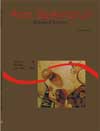Hematological characteristics and relative condition factor (Kn) associated with parasitism in <em>Schizodon borellii</em> (Osteichthyes, Anostomidae) and <em>Prochilodus lineatus</em> (Osteichthyes, Prochilodontidae) from Paraná River, Porto Rico region
Abstract
Forty-two adult specimens of “piava”, Schizodon borellii (Boulenger, 1900), and 42 adult specimens of “curimbatá”, Prochilodus lineatus (Valenciennes, 1836), were captured in the floodplain of the upper Paraná River, PR, Brazil, in February 1994 and in March 1995. The aim of the present research was to verify changes caused by parasitism in the blood profile of the above species. The number of erythrocytes (Er), hematocrit (Ht), hemoglobin rate (Hb), percentage of leukocytes were determined and absolute hematimetric indexes, mean corpuscular volume, mean corpuscular hemoglobin and mean corpuscular hemoglobin concentration were calculated. Parasites collected from gills and intestines were processed by routine methods. Nine specimens of S. borellii were infested with Dactylogyridae in the gills showing mean infestation intensity (MII) of 278.3 (1 to 1740) and 16 were infested with Cucullanus pinnai (Nematoda: Cucullanidae) in the intestine (MII = 3.3; 1 to 9). Six other fish were infested with Dactylogyridae (MII = 121.5; 2 to 360) and with C. pinnai (MII = 2.0; 1 to 4). No parasite infestation occurred in eleven fish. With regard to this species, no significant change in leukocytes differential counts or in the red series for parasitized fish was found. Individuals with Dactylogyridae were the only ones with special granulocytic cell and without eosinophils. Ten P. lineatus showed Dactylogyridae in the gills with MII = 86.9 (1 to 239), six were infested with Ergasilidae (MII = 27.5; 1 to 81), just one presented Neoechinorhynchus curemai (Acantocephala: Neoechinorhynchidae) in the intestine, and 25 were not parasitized. Dactylogyridae infestation in gills of this species caused only a decrease in hemoglobin rate. Significant differences occurred in Hb and in lymphocyte, neutrophil and monocyte percentages in fish infested with Ergasilidae. The specimen with N. curemai had low percentage of lymphocytes and a high percentage of neutrophils and monocytes. Relative condition factor (Kn) registered that parasites do not affect significantly the hosts’ condition.Downloads
Download data is not yet available.
Published
2008-05-09
How to Cite
Paiva, M. J. T. R. de, Silva-Souza, A. T., Pavanelli, G. C., & Takemoto, R. M. (2008). Hematological characteristics and relative condition factor (Kn) associated with parasitism in <em>Schizodon borellii</em> (Osteichthyes, Anostomidae) and <em>Prochilodus lineatus</em> (Osteichthyes, Prochilodontidae) from Paraná River, Porto Rico region. Acta Scientiarum. Biological Sciences, 22, 515-521. https://doi.org/10.4025/actascibiolsci.v22i0.2940
Issue
Section
Biology Sciences
DECLARATION OF ORIGINALITY AND COPYRIGHTS
I Declare that current article is original and has not been submitted for publication, in part or in whole, to any other national or international journal.
The copyrights belong exclusively to the authors. Published content is licensed under Creative Commons Attribution 4.0 (CC BY 4.0) guidelines, which allows sharing (copy and distribution of the material in any medium or format) and adaptation (remix, transform, and build upon the material) for any purpose, even commercially, under the terms of attribution.
Read this link for further information on how to use CC BY 4.0 properly.
0.6
2019CiteScore
31st percentile
Powered by 

0.6
2019CiteScore
31st percentile
Powered by 











1.png)




3.png)













